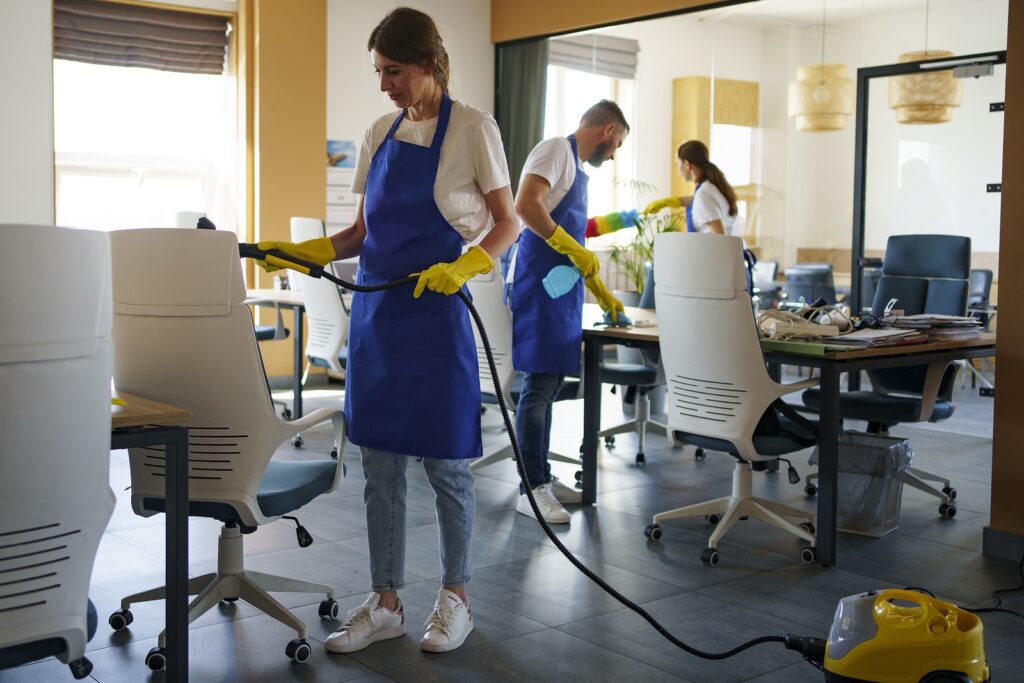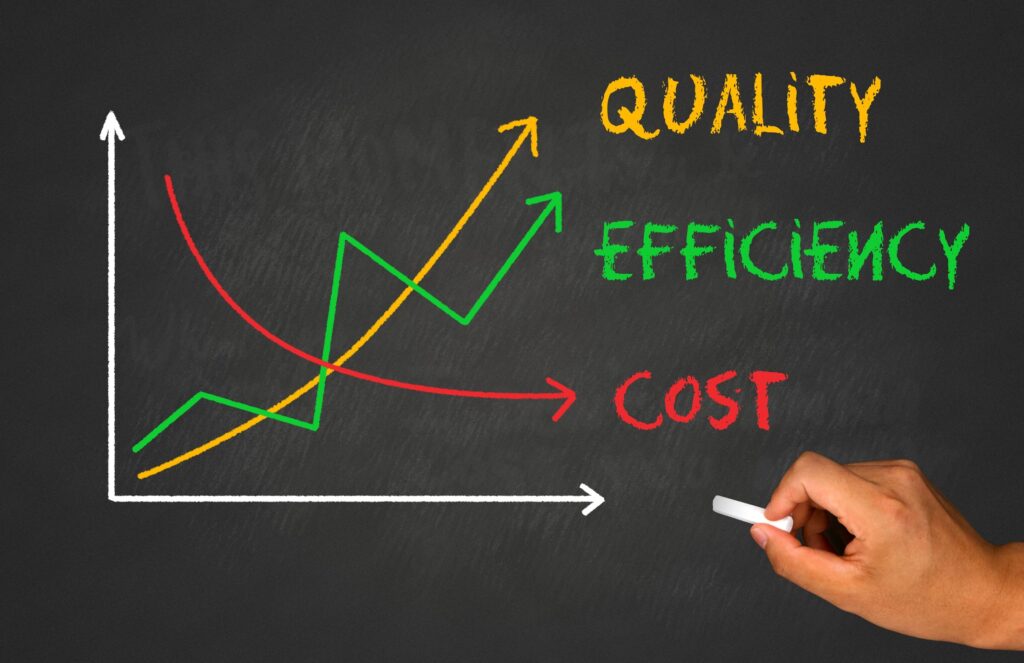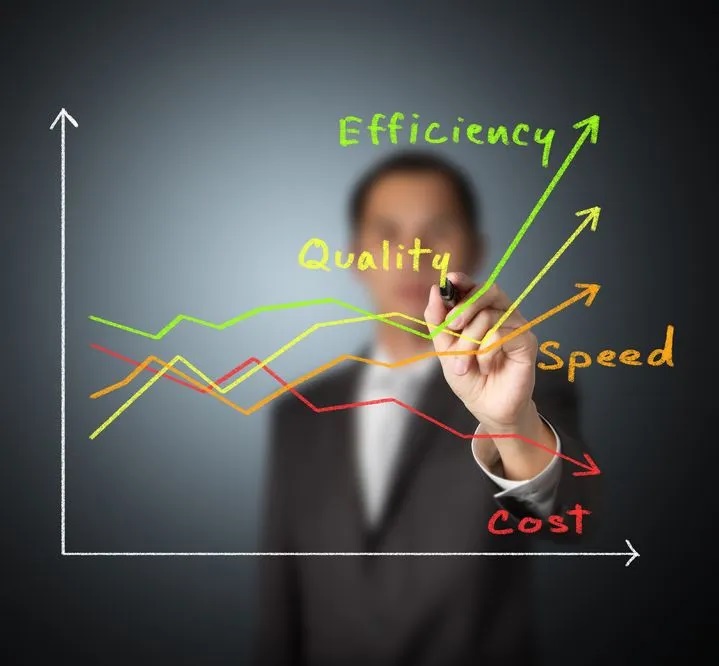Introduction
In the fast-paced world of industrial and commercial operations, maintaining a clean environment is crucial. However, it doesn’t have to come at an exorbitant cost. This guide provides actionable insights and strategies to help you optimise your cleaning processes, enhancing both cost savings and efficiency.

Chapter 1: Understanding Your Cleaning Needs
Assessing Your Current Cleaning Procedures
Before making any changes, it’s essential to understand your current cleaning procedures. Conduct an audit to evaluate the effectiveness and efficiency of your existing cleaning practices.
- Identify Key Areas: Determine which areas of your facility require the most attention.
- Frequency of Cleaning: Assess how often each area is cleaned and whether this frequency is necessary.
- Staff Utilisation: Evaluate how your cleaning staff is being utilised and identify any inefficiencies.
Setting Clear Objectives
Establish clear, measurable goals for your cleaning operations. This could include reducing costs, improving cleanliness levels, or enhancing staff productivity.
- Cost Reduction: Aim for a specific percentage reduction in cleaning costs.
- Cleanliness Standards: Set benchmarks for cleanliness levels.
- Efficiency Metrics: Define metrics to measure the efficiency of your cleaning staff.
Chapter 2: Streamlining Cleaning Processes
Implementing Standard Operating Procedures (SOPs)
Develop and implement SOPs for all cleaning tasks to ensure consistency and efficiency.
- Task Checklists: Create detailed checklists for each cleaning task.
- Training Programs: Train staff on these SOPs to ensure compliance.
- Regular Reviews: Periodically review and update SOPs to reflect best practices.
Utilising Technology and Automation
Leverage technology to streamline cleaning processes and reduce labour costs.
- Cleaning Management Software: Use software to schedule and track cleaning tasks.
- Automated Cleaning Equipment: Invest in robotic cleaners and other automated equipment to handle repetitive tasks.
Chapter 3: Cost-Effective Cleaning Solutions
Choosing the Right Cleaning Products
Select cleaning products that are effective yet cost-efficient.
- Multi-Purpose Cleaners: Use versatile cleaning agents that can be used on various surfaces.
- Bulk Purchasing: Purchase cleaning supplies in bulk to take advantage of discounts.
Outsourcing vs. In-House Cleaning
Decide whether outsourcing cleaning services or maintaining an in-house team is more cost-effective for your organisation.
- Cost Comparison: Compare the costs of outsourcing versus in-house cleaning.
- Quality Control: Consider the level of control you have over cleaning quality with each option.
Chapter 4: Enhancing Efficiency with Staff Training
Ongoing Training and Development
Invest in continuous training for your cleaning staff to improve their skills and efficiency.
- Regular Workshops: Conduct workshops on the latest cleaning techniques and products.
- Certification Programs: Encourage staff to obtain certifications in specialised cleaning areas.
Motivation and Incentives
Keep your cleaning staff motivated to maintain high performance levels.
- Performance Bonuses: Offer bonuses for outstanding performance.
- Recognition Programs: Recognise and reward employees for their hard work and dedication.
Chapter 5: Sustainable Cleaning Practices
Eco-Friendly Cleaning Products
Use environmentally friendly cleaning products to reduce your ecological footprint and improve indoor air quality.
- Green Certifications: Choose products with recognised green certifications.
- Non-Toxic Ingredients: Opt for products with non-toxic and biodegradable ingredients.
Reducing Waste
Implement strategies to minimise waste generated by your cleaning operations.
- Recycling Programs: Set up recycling stations for waste materials.
- Reusable Supplies: Use reusable cleaning supplies such as microfiber cloths.
Chapter 6: Measuring Success
Key Performance Indicators (KPIs)
Define and track KPIs to measure the success of your cleaning optimisation efforts.
- Cost Savings: Monitor reductions in cleaning costs.
- Efficiency Metrics: Track improvements in cleaning efficiency.
- Cleanliness Levels: Use cleanliness audits to measure improvements in hygiene standards.
Continuous Improvement
Adopt a culture of continuous improvement to keep optimising your cleaning processes.
- Regular Audits: Conduct regular audits to identify areas for improvement.
- Feedback Mechanisms: Implement feedback systems for staff and clients to provide input on cleaning quality.

Conclusion
Optimising your industrial and commercial cleaning processes is not just about cutting costs; it’s about enhancing efficiency, improving cleanliness standards, and adopting sustainable practices. By following the strategies outlined in this guide, you can achieve significant cost savings while maintaining a pristine and healthy environment for your operations.
About SMC Premier Group Ltd
At SMC Premier Group Ltd, we specialise in providing top-notch industrial and commercial cleaning services. With over 40 years of experience, our team is dedicated to delivering bespoke cleaning solutions tailored to your specific needs. Our commitment to sustainability and efficiency ensures that you receive the highest quality service while saving costs. Contact us today to learn more about how we can help you optimise your cleaning processes and achieve a cleaner, more efficient workspace.


 We use cookies on our website to give you the most relevant experience by remembering your preferences and repeat visits. By clicking “Accept”, you consent to the use of ALL the cookies.
We use cookies on our website to give you the most relevant experience by remembering your preferences and repeat visits. By clicking “Accept”, you consent to the use of ALL the cookies.